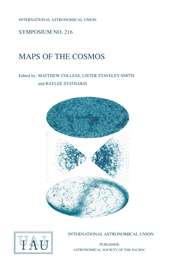No CrossRef data available.
Article contents
Moving-Image Astrometry With the Multi-Anode Microchannel Array (MAMA) Detector
Published online by Cambridge University Press: 04 August 2017
Abstract
Consider the possible astrometric use of the following concept: If the image of a field of stars is moved past a high-speed detector array at a precisely known velocity, relative positions can be determined by measuring time intervals. Attractive features of this approach are: times can be measured very accurately with photoelectric detectors; a relatively large area of the sky may be swept for reference stars; the images are measured essentially on-axis; and seeing effects can be partially frozen out. The only available detector with spatial and temporal resolution and stability adequate for this technique is the MAMA. A rudimentary observational test with this detector has yielded promising results. Further observations are planned to determine whether milliarcsecond accuracy can be obtained.
Information
- Type
- V. Small Field Photoelectric Astrometry
- Information
- Symposium - International Astronomical Union , Volume 109: Astrometric Techniques , 1986 , pp. 353 - 368
- Copyright
- Copyright © Reidel 1986

